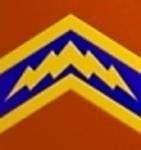It just simply is the hardest part for me in building. Since I build AFVs life became easier, but I still love airplanes and helicopters. The seams are tough. There's always a little bit left out, or you can see the filler around the seam being higher than the rest of the surface, and you can only see that after you added the decals... Even a grey primer sometimes hides these mistakes, and you have to see it with a gloss coat... and we haven't talked about the loss of detail while sanding and filling.
So how people do this? Is that really possible to use no putty? (Some reviews claim, but I have never seen a fuselage that didn't need to be filled.)
Hosted by Jim Starkweather
seamfilling
spongya

Joined: February 01, 2005
KitMaker: 2,365 posts
AeroScale: 71 posts

Posted: Wednesday, July 26, 2006 - 09:04 AM UTC

mother

Joined: January 29, 2004
KitMaker: 3,836 posts
AeroScale: 1,036 posts

Posted: Wednesday, July 26, 2006 - 10:24 AM UTC
Hey Andras,

This is an easy way that works well for me,
In FIG. 1 shows the fuselage, seam in red and rivet detail in black.
In FIG. 2 run masking tape along the seam line and putty. As soon as your done remove the tape. You donít want the putty to dry on the tape. You will have a nice straight line. Let this dry itís normal time.
In FIG. 3 shows the putty on seam line.
In FIG. 4 re-tape along the putty/seam line. Doing this will save your kits detail. From time to time youíll have to re-tape as you go along sanding. You will or may lose some detail, but it will be minimal and easily enough to fix.
Now if you have to re-scribe a panel lines over the putty, most time I do, Iíll spread super glue over the putty to make it stronger. The putty will soak it up. But the results a great. The putty will be hard and when scribing it wonít chip or gouge up. Still go slowly over the putty when doing so, and make several light passes.
Joe

This is an easy way that works well for me,
In FIG. 1 shows the fuselage, seam in red and rivet detail in black.
In FIG. 2 run masking tape along the seam line and putty. As soon as your done remove the tape. You donít want the putty to dry on the tape. You will have a nice straight line. Let this dry itís normal time.
In FIG. 3 shows the putty on seam line.
In FIG. 4 re-tape along the putty/seam line. Doing this will save your kits detail. From time to time youíll have to re-tape as you go along sanding. You will or may lose some detail, but it will be minimal and easily enough to fix.
Now if you have to re-scribe a panel lines over the putty, most time I do, Iíll spread super glue over the putty to make it stronger. The putty will soak it up. But the results a great. The putty will be hard and when scribing it wonít chip or gouge up. Still go slowly over the putty when doing so, and make several light passes.
Joe
Posted: Wednesday, July 26, 2006 - 01:29 PM UTC
Hi Andras!
My method is basically the same as Joes, except I dont do any sanding!
All you need are some Q-Tips and a bottle of nail varnish remover,(make sure its got acetone in it).
Follow steps 1-3 in Joes excellent diagrams, but instead of sanding the excess filler away just dip a Q-tip in the nail varnish remover and wipe the filler away.You'll find you use quite a few Q-tips.
This will leave you with a perfectly filled seam and no loss of detail.
Hope this helps.
Nige
My method is basically the same as Joes, except I dont do any sanding!
All you need are some Q-Tips and a bottle of nail varnish remover,(make sure its got acetone in it).
Follow steps 1-3 in Joes excellent diagrams, but instead of sanding the excess filler away just dip a Q-tip in the nail varnish remover and wipe the filler away.You'll find you use quite a few Q-tips.
This will leave you with a perfectly filled seam and no loss of detail.
Hope this helps.
Nige

spongya

Joined: February 01, 2005
KitMaker: 2,365 posts
AeroScale: 71 posts

Posted: Saturday, July 29, 2006 - 07:15 AM UTC
Thank you very much for the answers.
EdgarBrooks

Joined: June 03, 2006
KitMaker: 397 posts
AeroScale: 384 posts

Posted: Saturday, July 29, 2006 - 11:30 AM UTC
I try to prepare the fuselage, before joining, to minimise the need for filling. When plastic is injected, into the mould, it is hot. As it cools, it shrinks, very slightly. This means that, if you could examine the edges, of the fuselage, under a magnifying glass, the surface would appear slightly curved. Put two curved surfaces together, and you get )(. If the fuselage has no kinks, and can be laid flat, onto a surface, I fix some fine wet-and-dry paper to a flat board, and, gently(!!!) sand the mating surfaces. You only need to take a minute amount away, the sanded area will look dull, compared to the normal glossy, moulded, material, and, with practice, it is easy to discern when enough has been taken away. Of course this will lose the location pips, but they can be a nuisance, anyway. You will now get ][, and the join will need much less filler.
Edgar
Edgar
Mist086

Joined: August 22, 2006
KitMaker: 31 posts
AeroScale: 0 posts
Posted: Friday, August 25, 2006 - 02:54 AM UTC
Those are good tips for a beginner. Since i am one, i have one question. How much putty do you start with? I haven't really used putty before ( I was kind of scared too, and didn't have the patience either  )
)
Since taking the hobby up again, i want to make the best ones i can, so putty it is. Sorry for aking in here, but i didn't want to start a new thread
 )
)Since taking the hobby up again, i want to make the best ones i can, so putty it is. Sorry for aking in here, but i didn't want to start a new thread
Posted: Friday, August 25, 2006 - 03:13 AM UTC
Quoted Text
All you need are some Q-Tips and a bottle of nail varnish remover,(make sure its got acetone in it).
Hi there
There have been a number of health warnings about acetone-based products. I guess I'd better cover us on the legal line for Jim's sake and say Aeroscale makes no recommendation for its use or otherwise. I also use acetone-based nail varnish remover on kits, but have found the following link about acetone's safety http://www.ccohs.ca/oshanswers/chemicals/chem_profiles/acetone/health_ace.html to help you to make an informed judgement.
Al the best
Rowan

spongya

Joined: February 01, 2005
KitMaker: 2,365 posts
AeroScale: 71 posts

Posted: Friday, August 25, 2006 - 05:38 AM UTC
Quoted Text
There have been a number of health warnings about acetone-based products. I guess I'd better cover us on the legal line for Jim's sake and say Aeroscale makes no recommendation for its use or otherwise.
As an almost-chemist (long story), I can honestly say is that acetone is the least of our problems. The very thin liquid glue is more harmful (not to mention that some use toluene for glueing). The real danger is in spraypainging with no or inadequate protection, and in small particles generated during sanding (especially resin dust). The two-part epoxies are dangerous, too. While uncured, they are not only toxic, but carcinogenic as well. After cured they are fine. You can even eat them.
If you sand, SAND WET!!! (After all, it's a seam-filling topic.) Wear gloves with epoxies (Milliput, Apoxie sculpt too). Have a respirator/paintbooth for airbrushing, and don't paint where others are present (fine particles, solvent vapours remain in the air for hours.)
I really would like companies who make resin parts, kits, paints, etc to include a booklet on protecting ourselves. Someone with good connections to these companies? Anyone?

Quoted Text
How much putty do you start with?
About the amount of filler: use as little as possible. If it's not enough you can always repeat it, but it's hard to sand away the excess on the surrounding plastic (you have to as these would show up as little, elevated irregularities after painging). The swab-tip is actually very good.
(Others fill seams with Milliput or Apoxie, and swear by them, but I found that these are not soft enough for very fine seams. I might be doing something wrong.)

Siderius

Joined: September 20, 2005
KitMaker: 1,747 posts
AeroScale: 1,673 posts

Posted: Friday, August 25, 2006 - 06:27 AM UTC
Hi there, saw your article on seam filling. It can be a bear with some models, however, although I've never not filled a fuselage, I often don't fill wing roots or horizontal stabilizer roots with putty. The real machines are assembled like model kits with the wings being joined to the fuselarge and the stabilizers as well. Sometime a fillet is placed in the joint between surfaces sometimes not.
With a good kit often you can get away with just a line being visible on the wing root without putting any filler in.
Some will say that scale effect requires you to place filler in the root area but I find it easier to build the kit without doing so, painting the sub assemblies individually then joining them together.
Occassionaly you get a kit with a gap and then some filler may been required, but I just fnished a 1/72 scale P-51D from academy and used no filler on the wings or stabilizers. I will be posting new pictures of this kit soon, so take a look. Take care, and I hope this helps. Siderius
With a good kit often you can get away with just a line being visible on the wing root without putting any filler in.
Some will say that scale effect requires you to place filler in the root area but I find it easier to build the kit without doing so, painting the sub assemblies individually then joining them together.
Occassionaly you get a kit with a gap and then some filler may been required, but I just fnished a 1/72 scale P-51D from academy and used no filler on the wings or stabilizers. I will be posting new pictures of this kit soon, so take a look. Take care, and I hope this helps. Siderius
Removed by original poster on 08/26/06 - 10:19:48 (GMT).
Mist086

Joined: August 22, 2006
KitMaker: 31 posts
AeroScale: 0 posts
Posted: Sunday, August 27, 2006 - 11:53 PM UTC
Another question, if I may? How do you apply the putty to the wing joints? Plus how do you sand them? Any special way to go about those?
 |

















